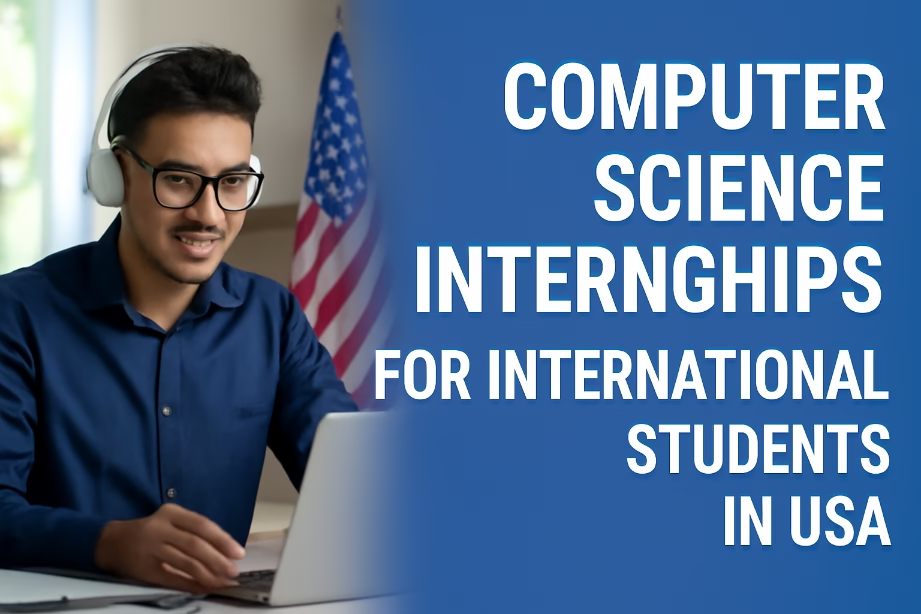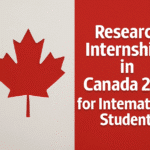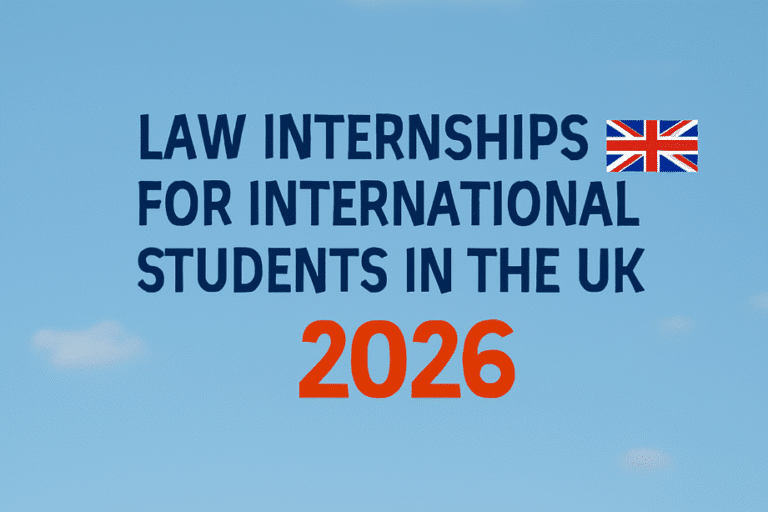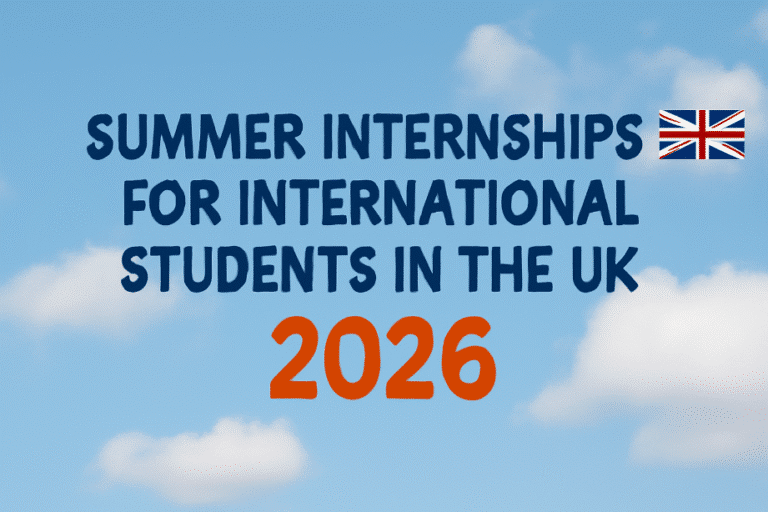Top 15 Computer Science Internships for International Students in USA
Computer Science Internships for International Students in the USA
Computer science internships in the United States are among the most valuable early-career experiences an international student can pursue. They provide exposure to large-scale production systems, mentorship from senior engineers, and the technical portfolio work that strengthens both future job and graduate-school applications. This guide lists 15 reputable computer-science internships and pathways that international students commonly use to gain U.S. experience — including large tech company internships, research programs, and startup pipelines — with practical notes on eligibility, compensation, and application timing.
Quick note on eligibility: Many U.S. employers can hire international students who already study in the U.S. (F-1 visa holders) using authorized practical training (CPT/OPT), or by offering temporary sponsorship for internships. For students outside the U.S., a small number of programs accept international applicants directly (or via home-country sponsorship). Always confirm work-authorization requirements on the official program page and with your university’s international student office.

Top computer science internships and programs (15 listings)
-
1. Google Internships (Software Engineering & Research)
Official link: Google Internships
Description: Google runs summer internships and year-round roles across software engineering, site reliability, research, and product. Interns join real product teams and often present their work at the end of the internship.
Requirements: Enrolled in a bachelor’s, master’s, or PhD program (or recent grad in some tracks); strong CS fundamentals; authorized to work in the U.S. (F-1 students use CPT/OPT; Google also sponsors where appropriate). Check the role posting for exact eligibility.
Paid/Compensation: Paid; internships typically include a competitive stipend and benefits (varies by location).
Location: Multiple U.S. campuses (Mountain View, New York, Seattle) and remote/hybrid options in some cycles.
Timeline: Apply early — typical deadlines for summer internships open in the fall and close in late winter/early spring.
-
2. Microsoft University Internship Programs (Explore, Core Internships)
Official link: Microsoft University Internships
Description: Microsoft offers a range of university internships (Explore for early undergrads, full Software Engineering internships for later-year students, research internships, and more).
Requirements: Enrollment in a degree program; ability to work full-time during the internship term; international students studying in the U.S. typically use CPT/OPT for authorization — Microsoft’s hiring pages explain program and country-specific rules.
Paid/Compensation: Paid; internships include salary and sometimes relocation assistance.
Location: U.S. offices including Redmond, CA, NYC, and teams across the country.
Timeline: Apply in the fall/winter for summer placements or earlier for co-op schedules.
-
3. Meta (Facebook) Internships — Software Engineer, Data Science
Official link: Meta Student Programs
Description: Meta hires interns across software engineering, research, data science, and product disciplines. Interns work on production systems and often receive strong mentorship and interview pipelines for full-time roles.
Requirements: Enrolled student (bachelor’s or higher) with strong CS foundation. Meta’s careers pages list eligibility and visa details — international students studying in the U.S. commonly work via CPT/OPT or company sponsorship.
Paid/Compensation: Paid; generous intern compensation with additional benefits during the internship period.
Location: Menlo Park and other U.S. offices; remote/hybrid options sometimes available.
Timeline: Summer internship applications typically open in fall and close in late winter.
-
4. Amazon (Software Development Engineer Internships & AWS)
Official link: Amazon Internships
Description: Amazon’s internships span software development, machine learning, product management, and AWS teams. Interns work on customer-facing features and complex backend systems.
Requirements: University enrollment and work authorization. Amazon does sponsor visas for certain internships and hires international students on CPT/OPT when applicable — confirm on position postings and with your international student office.
Paid/Compensation: Paid; intern salary is competitive and varies by location/team.
Location: Seattle, Austin, New York, and other U.S. sites; AWS locations nationwide.
Timeline: Application windows vary by team — many summer roles post in fall and close in winter.
-
5. IBM Internships & Extreme Blue
Official link: IBM Internships
Description: IBM runs internship tracks across software engineering, research, consulting, and the flagship Extreme Blue innovation internships (team-based product sprint experiences).
Requirements: University enrollment; IBM lists region-specific eligibility. Many international students enrolled in U.S. universities participate using CPT/OPT or local work authorization.
Paid/Compensation: Paid; IBM internships are typically salaried with benefits in some locations.
Location: U.S. hubs (Armonk, NY; Austin; Raleigh) and remote opportunities.
Timeline: Application cycles vary; check IBM university recruiting pages in fall/winter.
-
6. NVIDIA University Recruiting — Internships & Research
Official link: NVIDIA Internships
Description: NVIDIA’s internships focus on AI, deep learning research, software/tooling, and GPU-related systems. Interns often contribute to high-impact research and production code.
Requirements: Enrollment in relevant degree programs; international students studying in the U.S. typically use CPT/OPT or similar authorization. NVIDIA’s university recruiting page lists open roles and eligibility.
Paid/Compensation: Paid; competitive compensation and intern benefits.
Location: Santa Clara, CA and other U.S. engineering offices; remote options rare but occasionally available.
Timeline: Apply in fall/winter for summer programs; research internships may have different windows.
-
7. Intel Internships (Software/Hardware Co-ops)
Official link: Intel Careers & Internships
Description: Intel hires interns across software, firmware, hardware, and algorithms. Internships range from summer programs to year-long co-op placements.
Requirements: University enrollment; work authorization (CPT/OPT) for international students studying in the U.S. See Intel’s hiring and university pages for role-specific details.
Paid/Compensation: Paid; Intel internships include salary and typical intern perks.
Location: Hillsboro (Oregon), Santa Clara, Chandler (AZ), and other U.S. sites.
Timeline: Posting windows vary by position; many summer roles post in fall.
-
8. Palantir — Student Programs & Internships
Official link: Palantir Student & Intern Programs
Description: Palantir hires interns for product and forward-deployed engineering. Interns work on real deployments and customer integrations.
Requirements: Strong CS fundamentals; internship eligibility and work authorization depend on location — Palantir hires international students with appropriate authorization (CPT/OPT) and in some cases provides sponsorship. Check the posting for details.
Paid/Compensation: Paid; Palantir internships are well-compensated.
Location: U.S. offices and select client sites; roles can be client-facing.
Timeline: Fall/winter recruiting for summer internships.
-
9. Research Internships — University Research Labs & Paid Research Assistant Roles
Where to look: University CS departments (MIT, Stanford, CMU), lab pages, and faculty project pages. Many labs hire paid undergraduate research assistants; international students studying on F-1 in the U.S. can typically participate with CPT/OPT authorization. Direct faculty contact with a concise research pitch often works better than generic applications.
Requirements: Strong programming/research basics and a clear project interest.
Paid/Compensation: Many labs offer hourly pay or a stipend for RA roles.
Location: University towns (Cambridge, Pittsburgh, Palo Alto) — remote research roles sometimes available.
Timeline: Year-round but many summer RA positions open in spring; contact professors 2–3 months ahead.
-
10. Startup Internships & Accelerator Pipelines (YC, Techstars Affiliates)
Description: Startups in major U.S. hubs offer paid internships and can be more flexible with work authorization if you’re enrolled in a U.S. school (CPT/OPT). Accelerator partner networks and university-affiliated startup programs (e.g., CMU’s Swartz Center startups) post internship roles with immediate impact work.
Requirements: Demonstrable product-building experience; startups often value portfolios over formal credentials.
Paid/Compensation: Paid (stipend, equity, or hourly) depending on startup funding.
Location: Bay Area, NYC, Boston, remote-friendly startups across the U.S.
Timeline: Rolling — check accelerator job boards and startup career pages.
-
11. Google STEP & Student Researcher Programs (early-year undergrads)
Official link: Google Careers — Student Programs
Description: STEP is a Google internship tailored for first- and second-year students; Student Researcher internships place students with Google Research teams. These programs can be open to international students studying in the U.S. with CPT/OPT authorization.
Requirements: Underclassmen with strong coding and coursework background.
Paid/Compensation: Paid; competitive for early-career students.
Timeline: Recruit in fall for spring/summer terms.
-
12. Microsoft Research Internship (Research & PhD Intern Tracks)
Official link: Microsoft Research & Internships
Description: Research internships for undergraduates and graduate students working with Microsoft Research scientists on publishing projects and cutting-edge systems.
Requirements: Strong research background for research internships; international students in the U.S. typically apply via their university program and obtain CPT/OPT as needed.
Paid/Compensation: Paid and often well supported for travel and housing.
Timeline: Varies; many research internships have separate application windows from product internships.
-
13. Career & Industry Fellowships — Pallet/Bridge Programs (industry-academia partnerships)
Description: Some fellowships and bootcamps (e.g., company-sponsored research bootcamps or university-industry partnerships) create channels for international students to join internships with formal authorization or institutional sponsorship. These are often advertised through university career centers or faculty networks.
Requirements: Vary by program; often competitive with a project history required.
Paid/Compensation: Varies — some are paid fellowships.
Timeline: Check campus career services and faculty announcements in the academic year.
-
14. Tech Nonprofits & Open Source Programs (Outreachy, Google Summer of Code — where eligible)
Official link — Outreachy: Outreachy
Description: Outreachy and similar programs place participants in open-source projects with paid stipends and remote collaboration — Outreachy targets underrepresented groups and is open internationally. Google Summer of Code is another route for coding project experience (age and eligibility rules apply; some programs are university/student specific). These programs give strong portfolio outcomes for international applicants.
Requirements: Outreachy requires applicants to belong to an underrepresented group and be 18+; check program rules for Google SoC eligibility.
Paid/Compensation: Paid stipends on selection.
Timeline: Outreachy and SoC run yearly cohorts with announced timelines; apply when calls open (often early-year for summer cohorts).
-
15. Specialized Internships — Financial Tech, Robotics Labs, and Cybersecurity Programs
Description: Banks, fintech firms, and cybersecurity companies (e.g., Goldman Sachs tech internships, specialized security research labs) often advertise paid internship roles. Many accept applications from international students studying in the U.S. on CPT/OPT or offer sponsorship where feasible. Use company career pages and university recruiting events to find openings.
Requirements: Vary by employer; often strong coding, algorithms, or systems knowledge required.
Paid/Compensation: Paid; compensation depends on sector and company.
Timeline: Most competitive roles post in fall, with deadlines in winter/early spring.

Work authorization & visas — what international students must know
Most international students who attend U.S. colleges and universities hold F-1 visas. There are two primary authorized practical-training mechanisms that allow F-1 students to intern legally in the U.S.:
- Curricular Practical Training (CPT): Work authorization granted by your school for internships that are integral to your curriculum. CPT is requested through your Designated School Official (DSO); rules and requirements are campus-specific.
- Optional Practical Training (OPT): Post-completion OPT (or pre-completion OPT in some cases) that allows F-1 students to work in a field related to their major for up to 12 months (STEM majors can get a 24-month extension). OPT requires USCIS issuance of an EAD document.
Key practical points:
- Discuss CPT/OPT early with your international student office — timing matters for eligibility and course registration.
- Some federal agencies and defense-contract work (e.g., certain NASA roles) may require U.S. citizenship; check the host’s eligibility rules carefully. :contentReference[oaicite:15]{index=15}
- If you are outside the U.S., look for programs that accept international applicants directly (company global internship pages often note sponsorship options), or pursue virtual/remote internships until you can obtain U.S. study status and CPT/OPT authorization.
How to prepare a standout computer science internship application
- Portfolio first: GitHub repos, deployed projects, and clear READMEs beat vague statements. Include 1–2 projects that show depth (technical write-ups, architecture diagrams, and tests).
- Resume: One page, action-oriented bullet points, measurable outcomes (e.g., “Improved model accuracy by 12%” or “Reduced API latency by 50%”).
- Interview prep: Practice data structures and systems design. Big-tech phone screens focus on algorithms; startups value product and systems thinking.
- University channels: Use your campus career fair and faculty networks — many internships are filled via on-campus recruiting.
- Targeted outreach: For research internships, contact faculty with a concise email describing your skills and a proposed small project; attach a one-page CV and link to code examples.
Frequently asked questions (FAQs)
1. Can international students get internships at FAANG and major tech companies?
Yes. International students studying at U.S. universities routinely intern at major tech firms provided they have the required work authorization (CPT/OPT) or the company provides sponsorship. Always verify role-specific eligibility on the employer’s careers page. :contentReference[oaicite:16]{index=16}
2. Do companies sponsor interns for visas?
Some companies do sponsor interns in select cases, but most international students working internships in the U.S. use CPT/OPT when they are enrolled in a U.S. program. For longer—term or post-graduation employment, companies may offer H-1B sponsorship. Confirm sponsorship policies when you receive an offer. :contentReference[oaicite:17]{index=17}
3. Are remote internships a good alternative?
Absolutely. Remote internships (company-run or research projects) provide real engineering experience and avoid visa complexity. Many companies and open-source programs (Outreachy, SoC) offer remote, paid internships that are globally accessible. :contentReference[oaicite:18]{index=18}
4. When should I apply?
Most competitive summer internships post in the fall and close between December and February. Research and lab assistant roles sometimes recruit later; startups and micro-internships run year-round. Plan to start applications 3–6 months ahead of your ideal start date.
5. How should I include internships on my CV if I don’t yet have work authorization?
Be transparent: list your current visa status and note “CPT/OPT eligible” if applicable. If you don’t yet have U.S. study status, focus on remote internships, open-source contributions, and research projects that international employers value equally.
Related reading on this site: Internships for International Students in USA — Engineering, Virtual STEM Internships, and Paid Remote Internships for High School Students 2026.









